In the looking glass: 2017
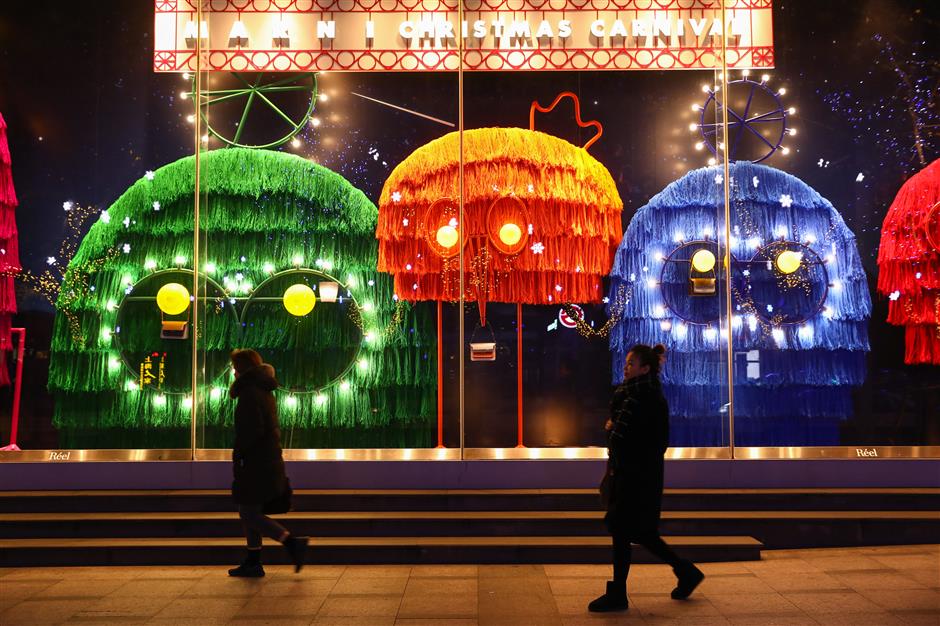
Nanjing Road W. is coated with holiday ambiance
January: The “two sessions”
The “two sessions” twin meetings of district lawmakers and political advisers were held to discuss the government’s policies and agenda for the year. Among the goals adopted were:
1. Overhaul of 656,000 square meters of public housing estates
2. Upgrading of 141 roads, with potholes filled, street trees planted, streetlights replaced, illegal stalls removed and shop fronts brought up to standard
3. Installation of 40,000 fire alarms in homes of 20,000 families living in older complexes
4. Establishment of five monitoring sites for 24-hour surveillance of water quality
5. Construction of three new wet markets and the installation of three vegetable vending machines
6. Construction of two community-based comprehensive care centers for the elderly, with free services provided to 2,000 seniors unable to care for themselves
7. Assistance in employment search for 1,800 underprivileged people and 590 jobless youth, and subsidies for 800 start-ups
8. Purchase of health insurance for 130,000 members of labor unions
9. Construction of 10 neighborhood cultural centers and two 24-hour libraries, and completion of three fitness trial projects and a new football stadium
10. Installation of handicapped equipment in the homes of 300 disabled citizens.

February: River cleanup
Jing’an Party Chief An Lusheng and Director Lu Xiaodong were named “river chiefs,” with the responsibility of monitoring and protecting water quality.
It was the first time that the performance of leading officials was tied to river quality, with penalties for failure to deliver up to standards.
A massive cleanup campaign of Jing’an waterways covering nearly 28 kilometers was undertaken. Jerrybuilt illegal structures were demolished on riverbanks and fetid waterways were purified using new eco-friendly systems. Floating “ecological islands” were created to absorb nitrogen and phosphorous.
Greenbelt areas built along rivers offer residents a place to get out and enjoy nature, do sports and plan family outings.
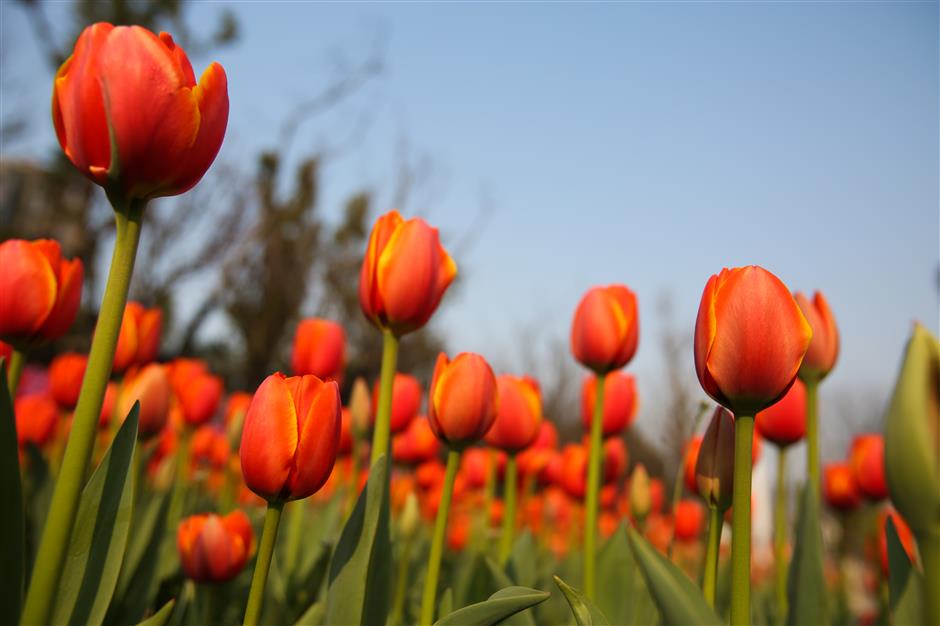
March: Tulip extravaganza
Jing’an brimmed with spring as more than two million tulips came into bloom in Daning Park.
Blanketing an area about the six of six footballs fields, more than 15 different species of the flowers created a carpet of vibrant color. The array included rare purple booms, often called “black tulips.”
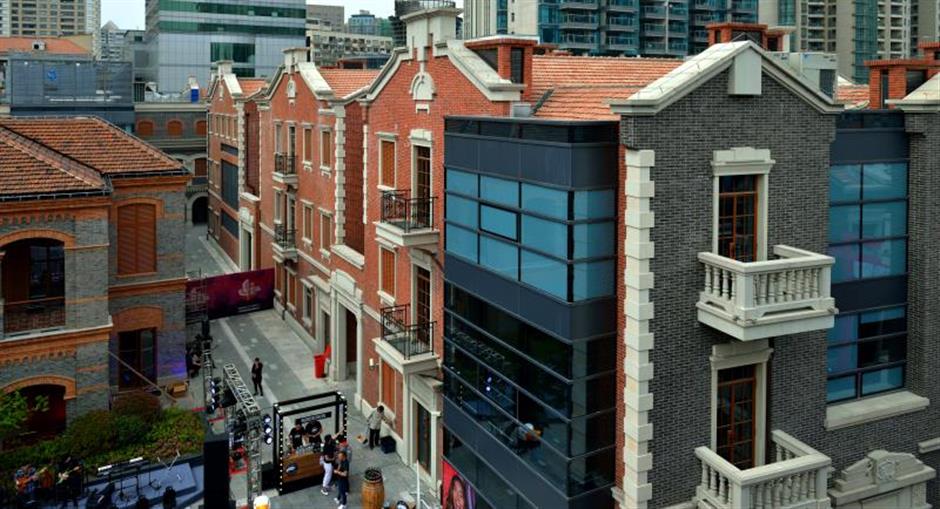
April: New shopping mall
Fengshengli opened to offer shopaholics something different from usual shopping malls.
The shikumen-style architecture added a cultural touch reminiscent of the Xintiandi area.
A 105-year-old historical building at the site was renovated, using as many original components as possible. Modern steel beams added structural support. Nine other red-brick building were replicas. They house chains like Hard Rock Cafe and Goose Island Brewhouse.

May: World brain center
Shibei High Technology Park prided itself on becoming a new adjunct of the Silicon Valley, with the launch of its American Innovation Center at Stanford University.
The facility aims to create a channel for cross-border incubation, program cooperation, technology transfer and talent exchange, with cutting-edge technologies introduced to Shanghai.
Meanwhile, 136 foreign entrepreneurs competed for recognition in the Puxi division of the “Startup in Shanghai” International Innovation and Entrepreneurship Competition.
Their ideas covered concepts like co-working spaces, modern public restrooms, online life guides for business travelers and artificial intelligence assistance for tennis players.

June: Stair climbers
Disabled and elderly residents living in buildings without lifts no longer are restricted to their homes.
The district pioneered the rental of stair chair lifts in the Pengpu Xincu and Linfen Road communities.
He Yuexian, 84, was among the beneficiaries. The automated stair chair enabled her to go outside her fourth-floor apartment into the fresh air for the first time in years.
It takes about one minute for one of the chairs to climb or descend one story. The program will be expanded to other needy communities in the future.

July: Storytelling in memorials
New technologies surprised visitors when the Memorial and Museum of the Second National Congress of the Communist Party of China reopened after a four-month renovation.
In a break from staid, stereotyped Party memorial sites, the refurbished museum both educates and entertains visitors. With augmented-reality glasses, they can step into rooms where history took place 95 years ago during the first plenary session of the Second National Congress of the Community Party.
Through computer-generated sensory technology, visitors also can see the Party constitution appear above a table and flick through it automatically. Later, in the augmented presentation, early Party leaders who attended the session appear, sitting at a table and conversing.

August: Suzhou Creek crossing
Residents living in old houses along Changping Road were relocated to modern apartments to make way for a new bridge crossing Suzhou Creek.
For residents, it meant an end to dilapidated, cramped living conditions.
The bridge has multiple benefits. It links Changping and Hengtong roads, shortening travel time in the area. The local environment was also upgraded.
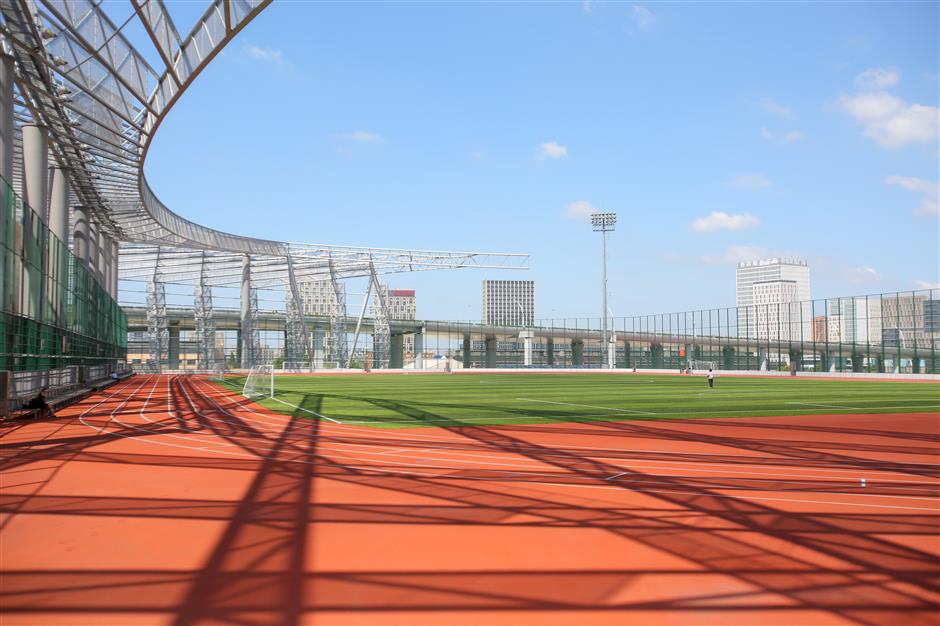
September: New sports facility
Jing’an’s biggest sports center opened on Wenshui Road. Covering 61,733 square meters, it dwarfs all other sports centers in the downtown area.
The highlight is a “rooftop” football field 13 meters above the ground, the first of its kind in Shanghai.
The center also has a 5,600-seat multifunction venue, a swimming pool, two basketball courts, two volleyball courts, four tennis courts, 16 table tennis courts and 20 badminton courts.
Some 7,000 people have competed there in 450 events.
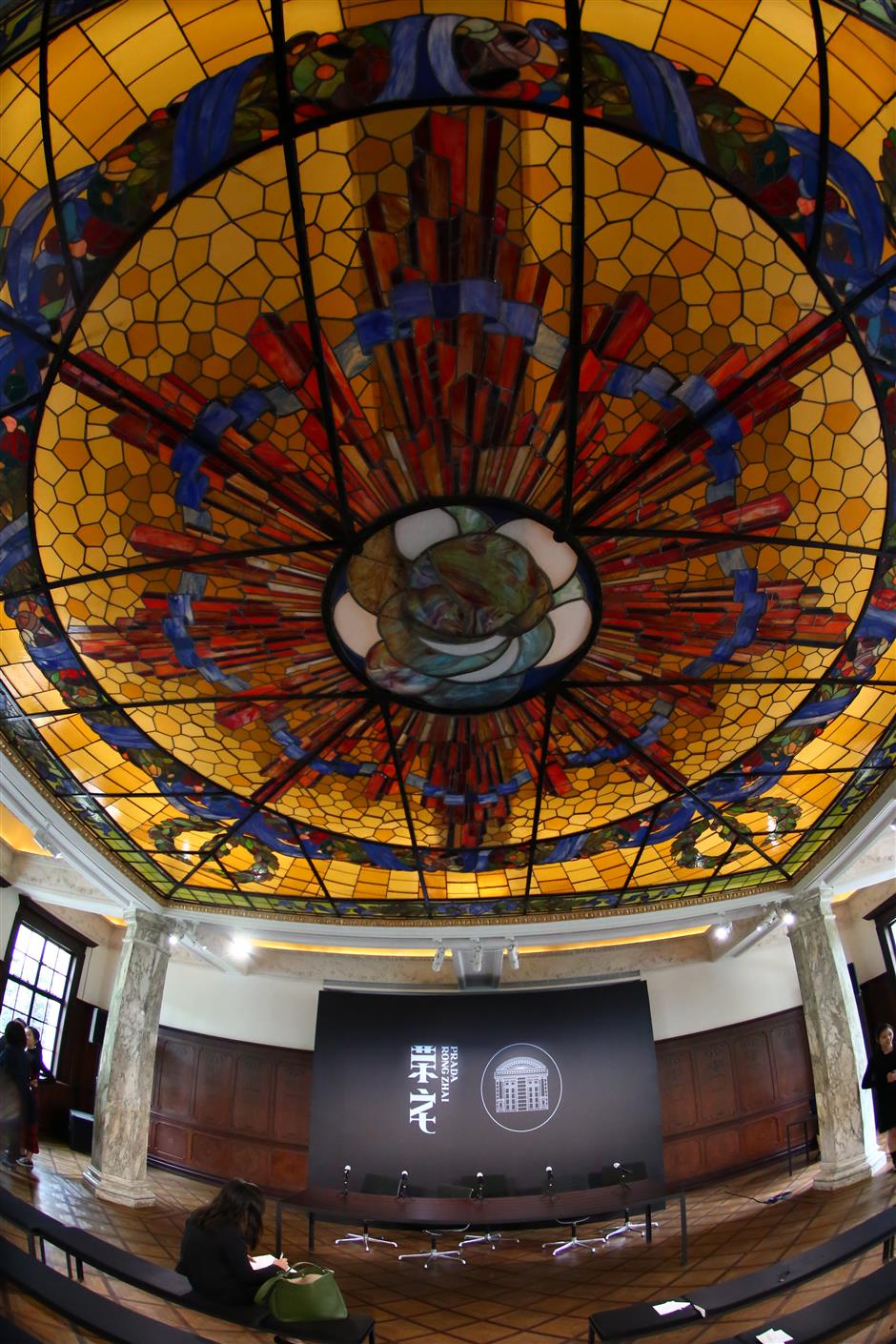
October: Icon of local heritage
The historic Rong Villa reopened after a six-year renovation involving Italian luxury brand Prada. Skilled craftsmen from Italy and China combined forces to repair broken pieces and restore the original look of the building.
The site is the former residence of Rong Zongjing (1873-1938), an industrial tycoon who built a commercial empire in China. Rong and younger brother Rong Desheng became magnates in flour and textiles. Nephew Rong Yiren, who served as vice president of China from 1993-98, founded the China International Trust & Investment Corp in 1979 and became known as the “Red Capitalist.”
Rong Zongjing bought the Shanghai garden villa site from a German in 1918. Its classic Beaux Arts-style facade has been maintained, while the interior decor by Eclectic & Art Deco Styles retains traditional Chinese elements.
Over the years, the villa has changed occupancy several times, housing the China Economic Research Institute and then the offices of media tycoon Rupert Murdoch. In 2011, Prada took over tenancy.

November: A smarter Nanjing Road
The big data revolution will transform commerce along the popular shopping street of Nanjing Road W., turning it into a “smart zone.”
Under the new system, retailers will be able to adjust their merchandise according to consumer data collected from various channels, including WiFi access and UnionPay transfers. They will also identify which classes of consumers are best targeted to increase sales and how to set prices.
Jing’an officials plan to put the system into full operation next year.

December: Cultural ambience
A district-wide overhaul of old buildings is nearing its end as part of a district policy to improve the ambience and lifestyles of neighborhoods. Many ideas have come from the grassroots.
Jing’ansi Community, for example, is restoring the original names of old alleys to recapture memories of the past. Many of the old names were changed over time.
Shanzhongli will be among the 19 residential complexes with restored names.
“We haven’t called it Shanzhongli for years, and young residents don’t even know that name,” said Cao Huilin, neighborhood official. “They call it 113 Changshu Road. We are reviving memories to help raise awareness about history and culture.”
A resident’s old photograph of the neighborhood has been blown up and replicated on a large wall at the entrance to the neighborhood.
Shanzhongli, which has 25 English-style garden townhouses, was built in 1930 along the Say Zoong Route, presently named Changshu Road.
The city government placed Shanzhongli on its list of heritage buildings in 1999. It was the only road in the former French Concession that was named after a Chinese.
Say Zoong is a French transliteration of Shanzhong, a pseudonym of the late property tycoon Tao Ruzeng.
The former residences of famous generals Jiang Guangnai, Dai Ji and Feng Zhi’an were located on Say Zoong Route. The 19 old residential complexes include Xianlin Villa at 470 Yuyuan Road and Rong’anfang at 496 Huashan Road.
















